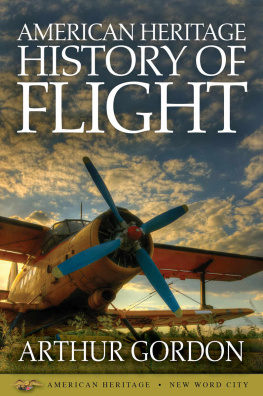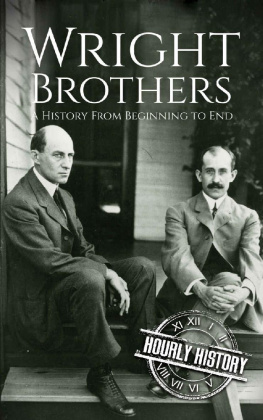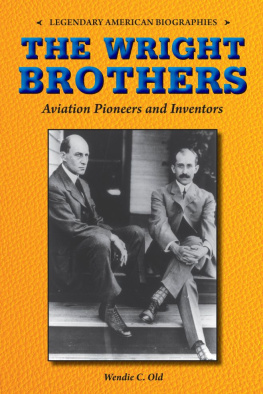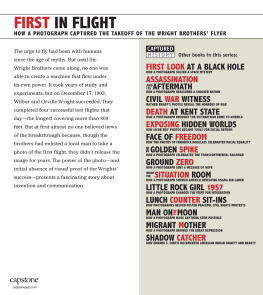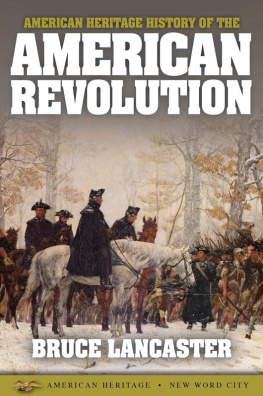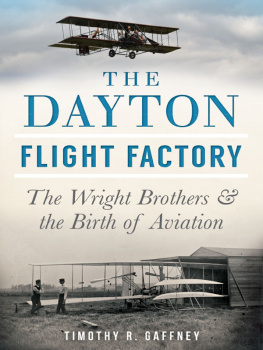Arthur Gordon - American Heritage History of Flight
Here you can read online Arthur Gordon - American Heritage History of Flight full text of the book (entire story) in english for free. Download pdf and epub, get meaning, cover and reviews about this ebook. City: Boston, year: 2015, publisher: New Word City, Inc., genre: Science. Description of the work, (preface) as well as reviews are available. Best literature library LitArk.com created for fans of good reading and offers a wide selection of genres:
Romance novel
Science fiction
Adventure
Detective
Science
History
Home and family
Prose
Art
Politics
Computer
Non-fiction
Religion
Business
Children
Humor
Choose a favorite category and find really read worthwhile books. Enjoy immersion in the world of imagination, feel the emotions of the characters or learn something new for yourself, make an fascinating discovery.
- Book:American Heritage History of Flight
- Author:
- Publisher:New Word City, Inc.
- Genre:
- Year:2015
- City:Boston
- Rating:3 / 5
- Favourites:Add to favourites
- Your mark:
- 60
- 1
- 2
- 3
- 4
- 5
American Heritage History of Flight: summary, description and annotation
We offer to read an annotation, description, summary or preface (depends on what the author of the book "American Heritage History of Flight" wrote himself). If you haven't found the necessary information about the book — write in the comments, we will try to find it.
American Heritage History of Flight — read online for free the complete book (whole text) full work
Below is the text of the book, divided by pages. System saving the place of the last page read, allows you to conveniently read the book "American Heritage History of Flight" online for free, without having to search again every time where you left off. Put a bookmark, and you can go to the page where you finished reading at any time.
Font size:
Interval:
Bookmark:

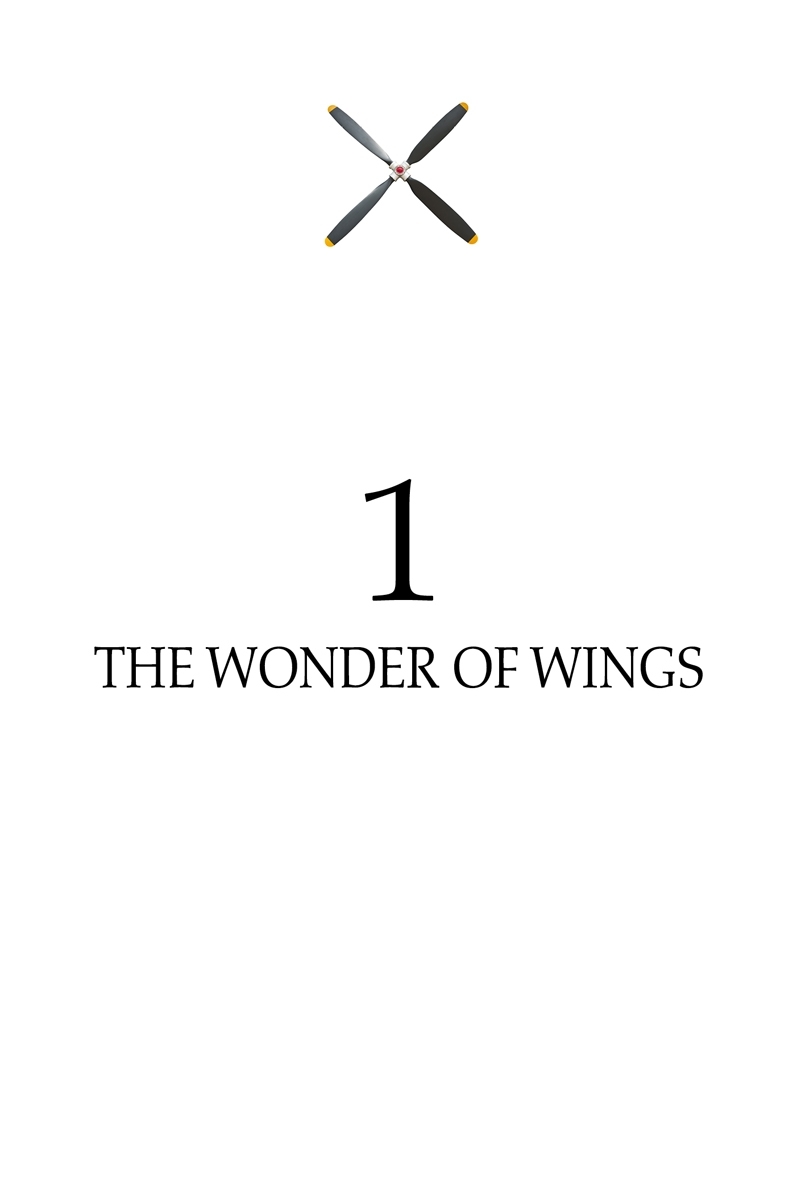
For half a million years at least, we lived at the bottom of an ocean of air without using it - except to breathe. We knew that the invisible envelope around us had substance, that it could move, that it could be rough or gentle, cold or warm. We saw it drive clouds, ruffle waters, stir grasses, and uproot trees. Groping for cause and effect, we must reasoned the wind was the breath of some gigantic god, invisible, unpredictable, potentially hostile like everything else in our frightening world.
All about us at the same time were clues to the secret of flight. When we watched smoke drift upward, when we hurled our boomerangs or loosed feathered arrows, when the squid leaped away from us in tropic seas, we were witnessing the phenomena that we would one day utilize in our own mastery of the air: the lift of lighter-than-air substances; air pressure against wing surfaces; jet propulsion. We saw these things, but we did not comprehend them.
Nor did we comprehend the grace with which birds performed their aerial acrobatics. We could only observe their flights with incredulity and admiration, and observing, come to speculate about the origin of their wondrous gift. Birds were a constant source of inspiration to those of us who dreamed of imitating them - as well as a constant irritant, because the imitation seemed so unattainable.
The force of this stimulus was perhaps never better expressed than by a forty-one-year-old American addressing a society of French aviation enthusiasts in 1908. I sometimes think that the desire to fly after the fashion of birds is an ideal handed down to us by our ancestors who, in their grueling travels across trackless lands in prehistoric times, looked enviously on the birds soaring freely through space, at full speed, above all obstacles, on the infinite highway of the air. The tribute he was receiving that night for the success he and his brother had achieved five years earlier, Wilbur Wright said, was really a tribute to an idea that has always impassioned mankind.
But as the millenia passed and the sky still arched above us, enormous and challenging, our imagination began to fill with a host of strange creatures and objects: demons and dragons, angels and devils, flying carpets and flying chariots. Some of these fantasies were foolish, but they expressed our wonder at - and defiance of - the incomprehensible mysteries that surrounded us.
Wherever people walked, they invented gods and devils, but there was something more urgent and fascinating about the denizens of the sky. The idea of soaring, of rising up from earthly cares had such an irresistible appeal that wings and their significance became inextricably entwined with our aspirations.
Almost as soon as forms of expression appear - carving, painting, writing - the theme of wings is there. From the winged bulls guarding the halls of ancient Persia to the winged horse Pegasus of Greek mythology, the thought is clear and unmistakable: to fly is to conquer, to be a god.
Into this savage company people came slowly and hesitantly. The early history of human attempts to fly is legend. A few faint echoes of disasters may just possibly have been based on fact, but the traditions of successful flight certainly are not. No one seems to have learned anything from the failures; there was nothing to be learned from the improbable successes.
The earliest recorded story of human flight is Chinese. Some 4,000 years ago, according to the ancient Annals of the Bamboo Books, the Emperor Shun escaped from captivity as a boy by donning the work-clothes of a bird. On another occasion, the versatile Shun became a flying dragon. When his father ordered Shun to the top of a tall granary and then set it on fire, the youth escaped by seizing two wide-brimmed reed hats and floating safely to the ground. Such hats sometimes were three feet wide, so Shun may well have been the first successful parachutist.
The Chinese possess many other aerial legends, Lei Kung , the god of thunder and lightning, had the wings of a bat. In the eighteenth century B.C., one Ki-kung-shi supposedly invented a flying chariot; the old drawings show him sailing through the heavens with a satisfied smirk and no visible means of support. Some 1,600 years later, an eager experimenter named Liu An concocted an elixir that gave him the power of levitation. As he rose on high, he dropped his flask into a barnyard, whereupon the animals that sampled the spilled contents took off too.
The folklore of virtually every early civilization had its flying heroes or demigods. Kai Kawus, an ancient king of Persia, was said to have had a flying throne drawn by four hungry eagles that flapped frantically in an effort to reach slabs of meat impaled on spears just beyond their beaks. (Other legends credit Alexander the Great with a similar device, a cage drawn by winged griffins.) In northern Europe, it was Wayland the Smith and his shirt made of feathers. In Africa, it was a great warrior, Kibaga, who flew invisibly over his enemies and dropped rocks on them until they finally brought him down by shooting their arrows blindly into the air.
The best-known of all the flying legends is the story of Daedalus and Icarus, who fashioned wings of feathers and wax with which to escape from the labyrinth of Cretan King Minos; the flight ended in disaster for Icarus when he flew too close to the sun. The plunge of Icarus has fascinated generation after generation. Pure myth, perhaps, yet sometimes legend is a shimmering cloak for truth. Daedalus, the cunning artificer, knew of the sail that reaches for the restless wind, captures it, and converts it into power. The updrafts where a steep cliff rises from the sea can be very strong, and Crete has such cliffs. Moreover, the principal components of a glider - light wood and cloth - were just as available in the Age of Bronze as they are now.
Could Daedalus, watching the soaring gulls, actually have attempted a glider large enough and strong enough to carry a man? H. G. Wells thought so. (Or perhaps it was Wells-the-novelist rather than Wells-the-historian speaking.) Suppose Daedalus did construct some such device; suppose his son was killed in some gallant and foolish experiment. The embroidery of the poets and the epic-singers is understandable. Beyond the miracle of flight is conflict, drama, the wicked king posting guards by land and sea. Ovid has Daedalus saying dramatically, Well go through air; for sure the air is free. And then the moral, with pride going before a fall.
Not all the inventions were simply legends. The windmill, an ancestor of the propeller, was known and used in ancient Rome. The Chinese introduced the kite long before the Christian era and were using it for military signaling at least as early as the third century B.C. Tradition has it that by the Middle Ages they had developed monster kites capable of lifting men, and it seems possible. The Chinese also invented gunpowder about 900 A.D. and hit upon the idea of the rocket about 1100.
The identity of the first man-made object to fly under its own power is shrouded in mist and silence. Several centuries before Christ, according to Chinese records, a contemporary of Confucius named Kung-shu Tse built a wooden and bamboo magpie that flew for three days. It was, quite simply, a kite.
The mysterious wooden pigeon of Archytas , which astounded observers in southern Italy in about 400 B.C., however, cannot so easily be dismissed as a kite. According to Aulus Gellius , a gossipy Roman who tells the story in his
Font size:
Interval:
Bookmark:
Similar books «American Heritage History of Flight»
Look at similar books to American Heritage History of Flight. We have selected literature similar in name and meaning in the hope of providing readers with more options to find new, interesting, not yet read works.
Discussion, reviews of the book American Heritage History of Flight and just readers' own opinions. Leave your comments, write what you think about the work, its meaning or the main characters. Specify what exactly you liked and what you didn't like, and why you think so.

